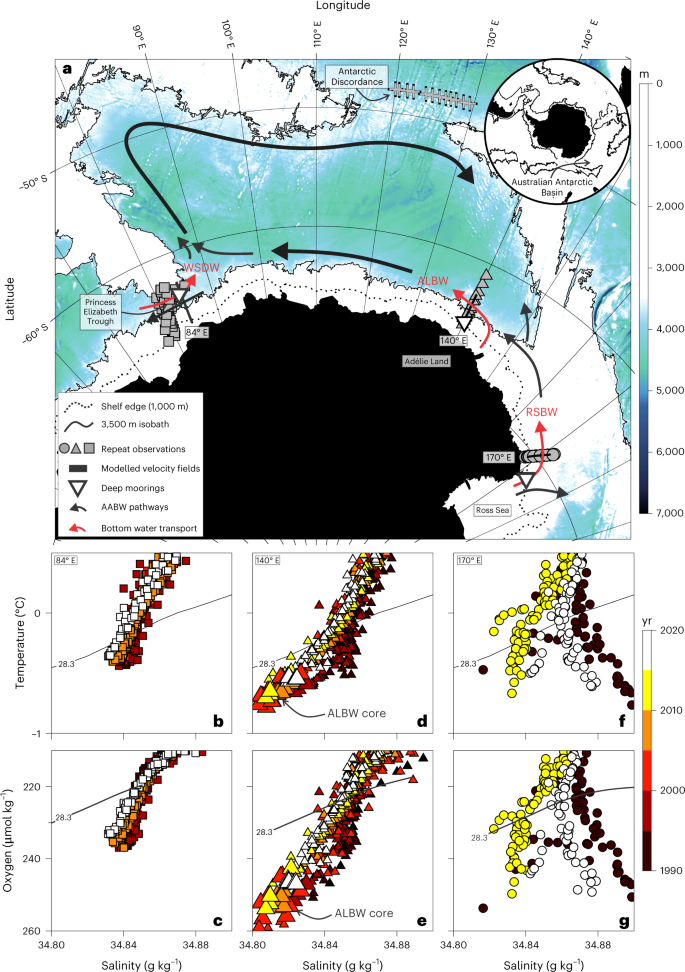2023-05-26 ニューサウスウェールズ大学(UNSW)
◆新たな研究によると、過去30年の間に、深海の酸素濃度の低下に伴い、オーバーターニング循環がほぼ3分の1(30%)減速していることが明らかになりました。南極の氷が溶けることで、南極の底水の形成が乱れ、表層水が沈みにくくなり、循環が阻害される。この循環の停滞は酸素供給量の減少につながり、深海の動物に影響を与え、地球温暖化を激化させる。さらに、海底に到達する南極海底水の減少は、海面上昇の一因となる。
◆観測やデータ解析によると、南極の氷が減り続けているため、これらの変化はすでに起きており、今後も続くと考えられています。したがって、この減速の影響を緩和し、環境を保護するためには、温室効果ガスの排出を減らすための緊急の対策が必要である。
<関連情報>
- https://newsroom.unsw.edu.au/news/science-tech/antarctic-alarm-bells-deep-ocean-currents-are-slowing-earlier-predicted
- https://www.nature.com/articles/s41558-023-01667-8
オーストラリア南極海盆における最近の海底オーバーターニングと換気の低下 Recent reduced abyssal overturning and ventilation in the Australian Antarctic Basin
Kathryn L. Gunn,Stephen R. Rintoul,Matthew H. England & Melissa M. Bowen
Nature Climate Change Published:25 May 2023
DOI:https://doi.org/10.1038/s41558-023-01667-8
Abstract
Dense water formed near Antarctica, known as Antarctic bottom water (AABW), drives deep ocean circulation and supplies oxygen to the abyssal ocean. Observations show that AABW has freshened and contracted since the 1960s, yet the drivers of these changes and their impact remain uncertain. Here, using observations from the Australian Antarctic Basin, we show that AABW transport reduced by 4.0 Sv between 1994 and 2009, during a period of strong freshening on the continental shelf. An increase in shelf water salinity between 2009 and 2018, previously linked to transient climate variability, drove a partial recovery (2.2 Sv) of AABW transport. Over the full period (1994 to 2017), the net slowdown of −0.8 ± 0.5 Sv decade−1 thinned well-oxygenated layers, driving deoxygenation of −3 ± 2 μmol kg−1 decade−1. These findings demonstrate that freshening of Antarctic shelf waters weakens the lower limb of the abyssal overturning circulation and reduces deep ocean oxygen content.



